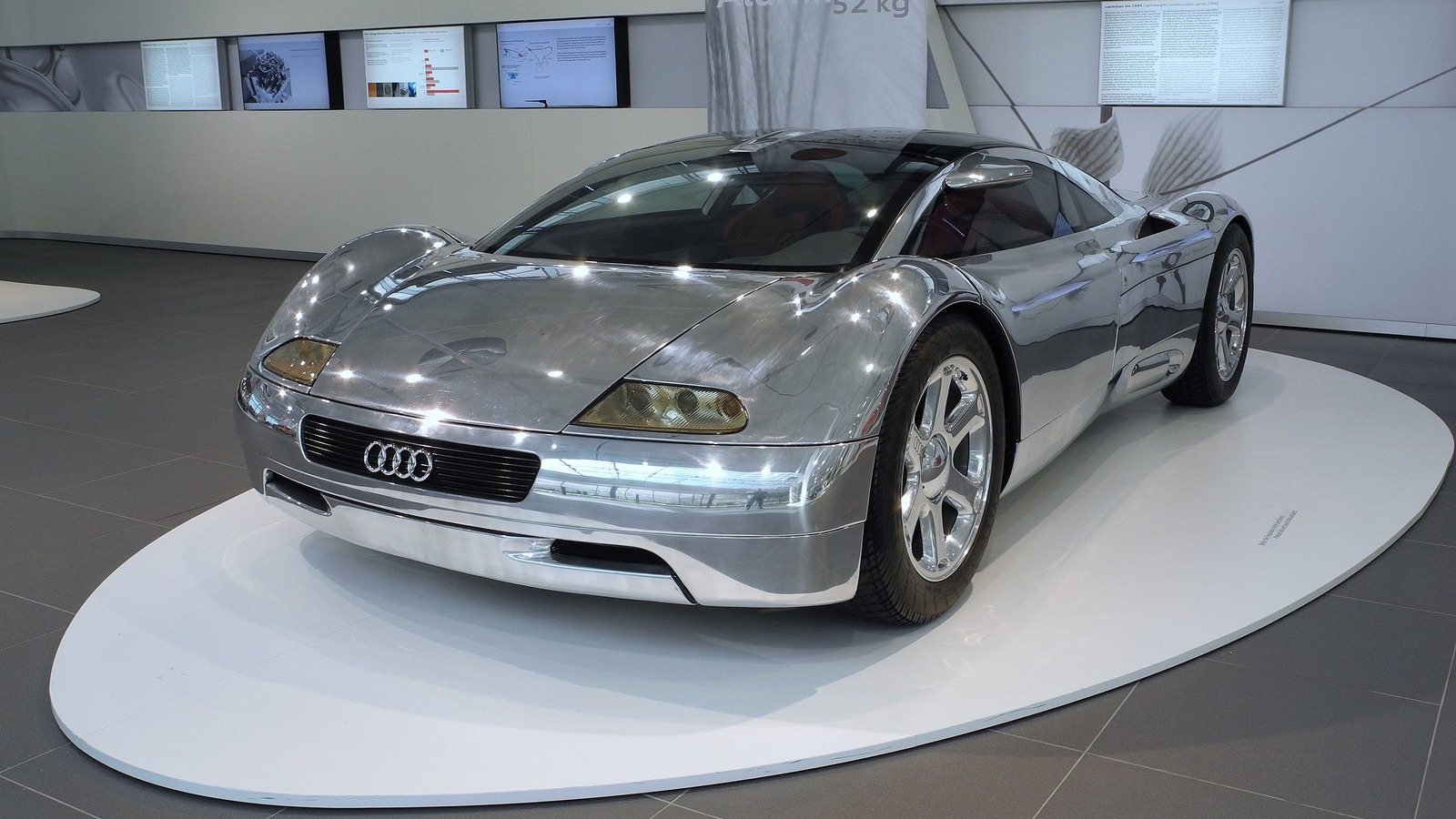
While the exterior looks like chrome and is as shiny as SpaceX’s Starship, the body was made entirely of hand-beaten aluminum panels a mere 1.5-mm thick (via Top Gear). Between the all-aluminum body atop Audi’s Space Frame, the car only weighed 2,755 pounds (via Motor1).
All said and told, the W12 engine — coupled with the sleek concept’s aerodynamic features — theoretically had a top speed of around 211 mph, and could go from 0-62 mph in 3.0 seconds flat (per Top Gear). Yes, theoretically, because the engine in the Avus Quattro on display at the Tokyo Auto Show wasn’t real. The “engine” people viewed through the rear window was a wooden facsimile covered with plastic. The real W12 was still in development and had not been fully built or tested yet, so … Audi faked it. And it worked.
Audi never intended to put the car into production, so they were able to cut a few corners to usher in ideas and concepts it intended to follow through with in other vehicles down the line. But the ruse worked so well that rumors persist about people offering to pay Audi $12 million per car to build a working road version of the Avus Quattro concept car (via Motor1).
Few and far between have that kind of money to spend on a car, but not all is lost. Mattel released several different Hot Wheels versions, making the supercar affordable for everyone.
Stay connected with us on social media platform for instant update click here to join our Twitter, & Facebook
We are now on Telegram. Click here to join our channel (@TechiUpdate) and stay updated with the latest Technology headlines.
For all the latest Gaming News Click Here
